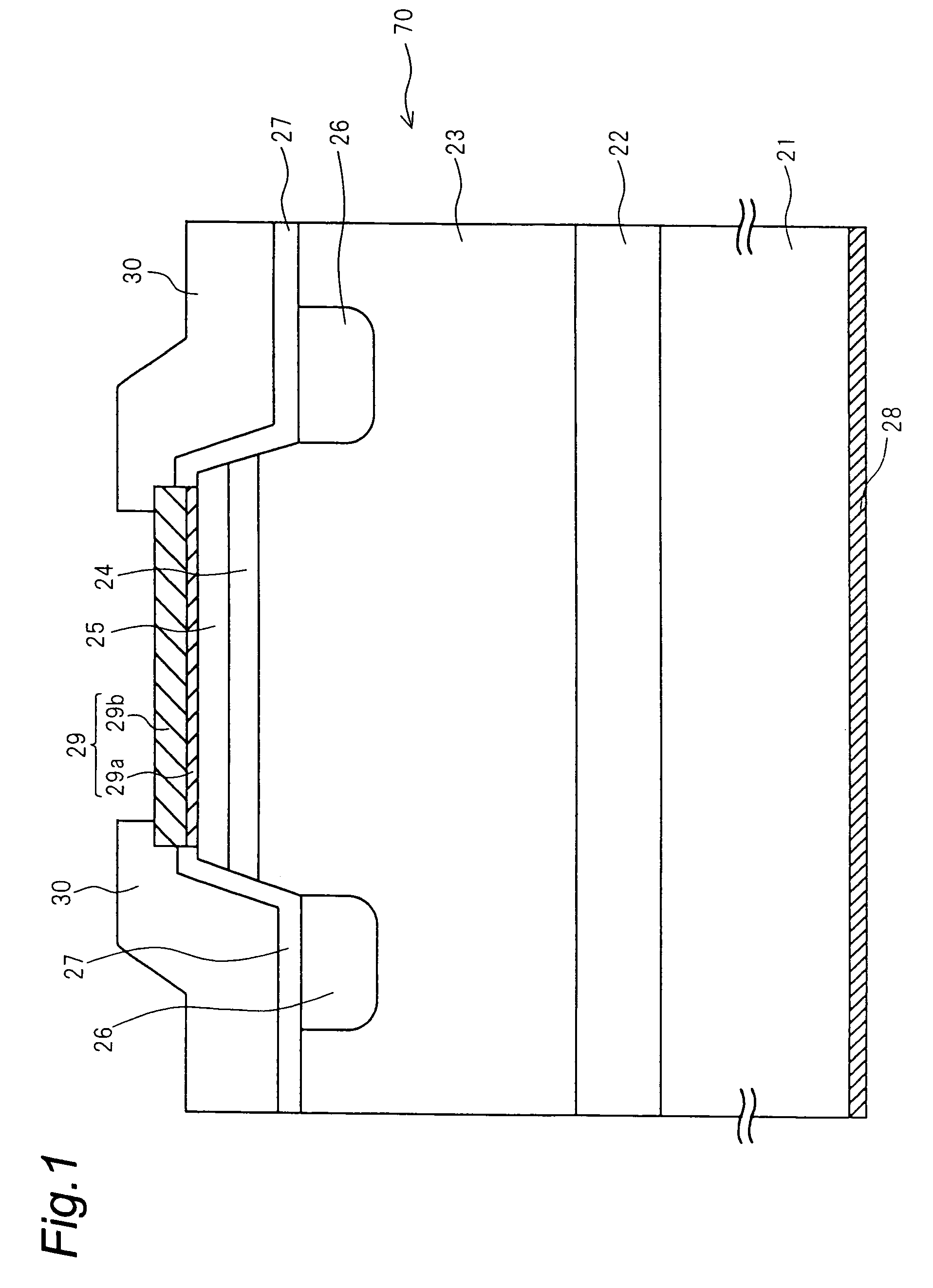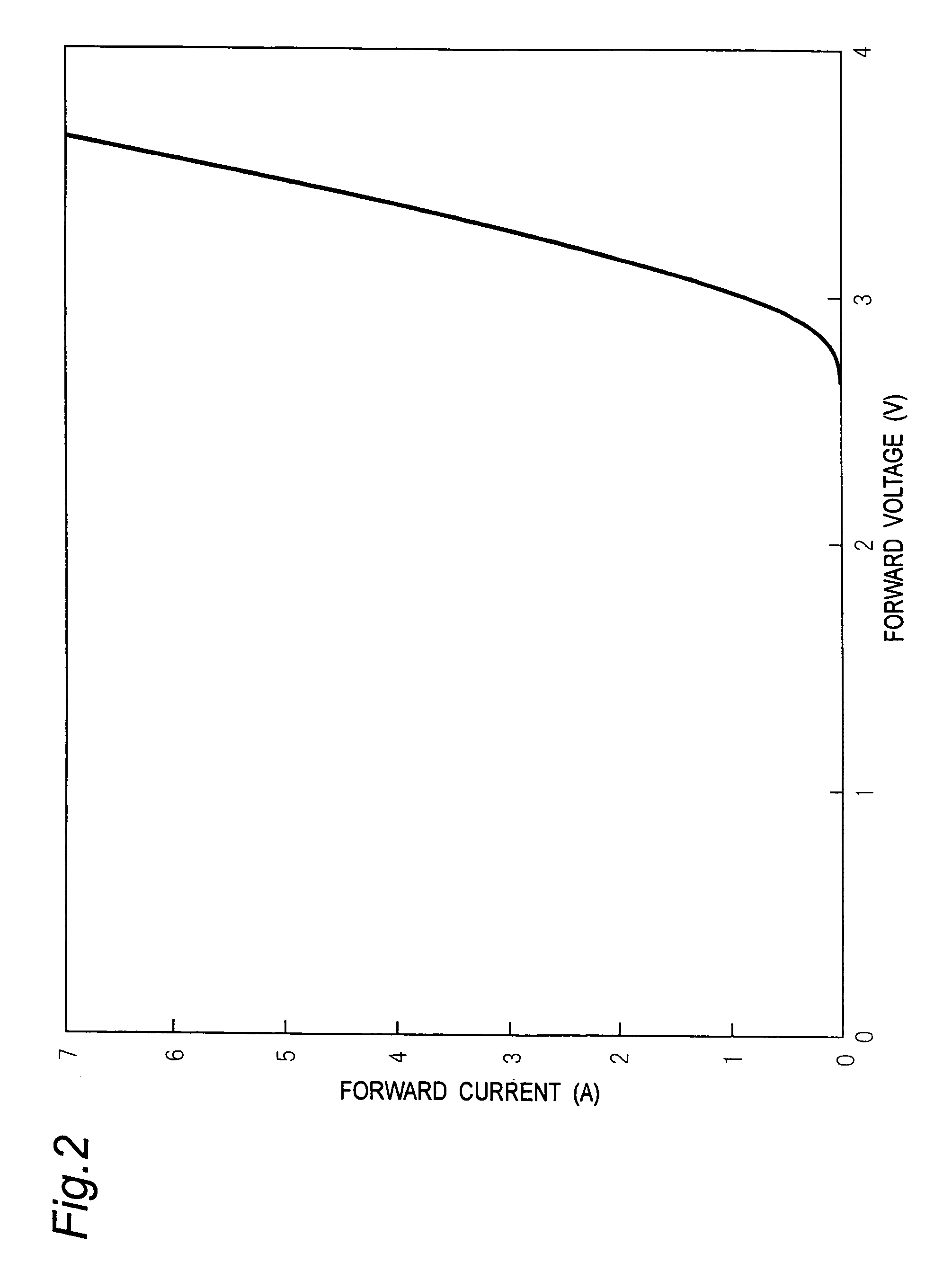Silicon carbide semiconductor device and manufacturing method therefor
a technology of silicon carbide and semiconductors, applied in semiconductor devices, semiconductor/solid-state device details, electrical devices, etc., can solve the problem of suppressing growth rate, suppressing basal plane dislocation from the substrate to the epitaxial film, and preventing forward voltage deterioration
- Summary
- Abstract
- Description
- Claims
- Application Information
AI Technical Summary
Benefits of technology
Problems solved by technology
Method used
Image
Examples
first embodiment
[0101]FIG. 1 is a sectional view of a pn (pin) junction diode which is a First Example Embodiment of a bipolar semiconductor device . In this Embodiment, semiconductor layers to be described below are formed on an p-p-type (first conductive type) 4H SiC substrate 21 whose surface orientation has an off-angle of 8 degrees from the (000-1) carbon surface. In the term “4H,” the character “H” means hexagonal crystal and the numeral “4” means a crystal structure whose atomic lamination is four-layer cyclic. The C surface of the substrate 21 is a surface 2a having an off-angle θ of 8 degrees from the (000-1) carbon surface 2 of SiC crystal of FIG. 6. The film growth rate for each layer is 15 μm / h, where the increasing rate of film thickness per hour (h) is faster than in the conventional counterpart. Then, as described in detail below, n-p-type (first conductive type) 4H-SiC layer and p-type (second conductive type) 4H-SiC layer are epitaxially grown one by one, by which an epitaxial pin ...
second embodiment
[0126]FIG. 4 is a sectional view of an npn bipolar transistor 50 which is a Second Example Embodiment of a bipolar semiconductor device. In this embodiment also, as shown in FIG. 6, an p-p-type 4H SiC substrate having a surface 2a whose surface orientation has an off-angle θ of 8 degrees from the (000-1) carbon surface 2 (hereinafter, referred to as C surface) is used. On this substrate, n-type 4H-SiC, p-type 4H-SiC and n-type 4H-SiC are successively epitaxially grown in this order with a film-thickness increasing rate per hour (h) of 15 μm / h, by which an npn bipolar transistor 50 was fabricated.
[0127]Also, n-type 4H-SiC having a surface 1a (hereinafter, referred to as Si surface) whose off-angle θ from the (0001) silicon surface 1 shown in FIG. 7 was 8 degrees was used as the substrate for an npn bipolar transistor for comparison use. On this substrate, individual layers were grown with a film-thickness increasing rate per hour (h) of 5 μm / h. The primary junction surface (a surface...
third embodiment
(Third Embodiment)
[0149]A Third Example Embodiment relates to an IGBT (Insulated Gate Bipolar Transistor) which is a bipolar semiconductor device . FIG. 5 is a sectional view of an IGBT 60 of this Embodiment. In this Embodiment, a substrate 61 (hereinafter, referred to as C surface substrate) using n-type 6H SiC whose surface orientation has an off-angle θ of 3.5 degrees from the (000-1) carbon surface 2 in FIG. 6 is prepared. On the substrate 61, three layers, i.e. a p-type 6H-SiC layer, an n-type 6H-SiC layer and a p-type 6H-SiC layer, are epitaxially grown in this order with a film-hickness increasing rate per hour (h) of 15 μm / h, by which an IGBT 60 is fabricated as is explained in detail below. The primary junction surface (a surface extending horizontally in the figure) of the p and n layers is the {0001} surface.
[0150]A comparative IGBT for comparison with the IGBT of this Embodiment is fabricated in the following way. A substrate (hereinafter, referred to as Si surface subst...
PUM
| Property | Measurement | Unit |
|---|---|---|
| off-angle | aaaaa | aaaaa |
| forward voltage | aaaaa | aaaaa |
| off-angle | aaaaa | aaaaa |
Abstract
Description
Claims
Application Information
 Login to View More
Login to View More - R&D
- Intellectual Property
- Life Sciences
- Materials
- Tech Scout
- Unparalleled Data Quality
- Higher Quality Content
- 60% Fewer Hallucinations
Browse by: Latest US Patents, China's latest patents, Technical Efficacy Thesaurus, Application Domain, Technology Topic, Popular Technical Reports.
© 2025 PatSnap. All rights reserved.Legal|Privacy policy|Modern Slavery Act Transparency Statement|Sitemap|About US| Contact US: help@patsnap.com



